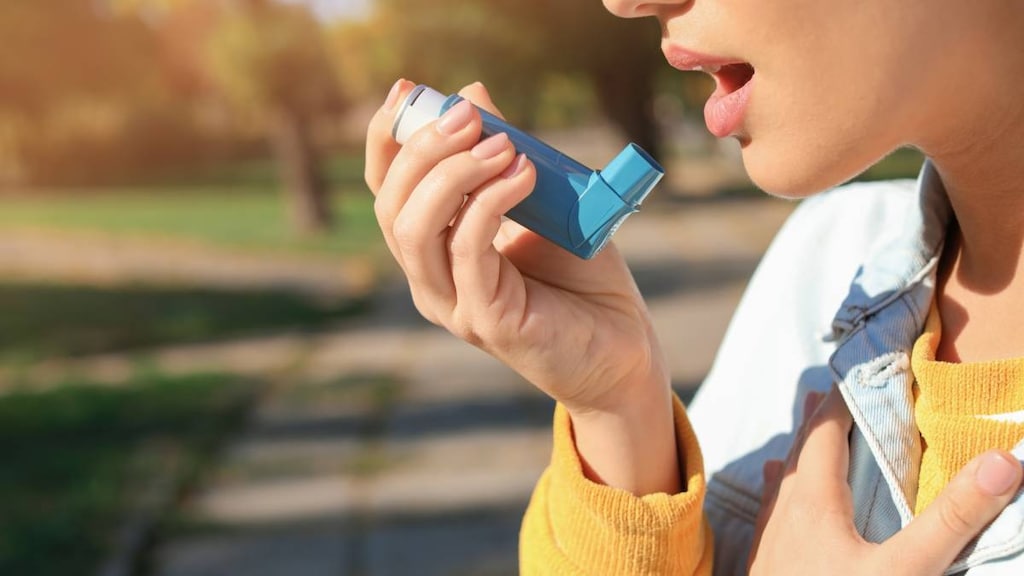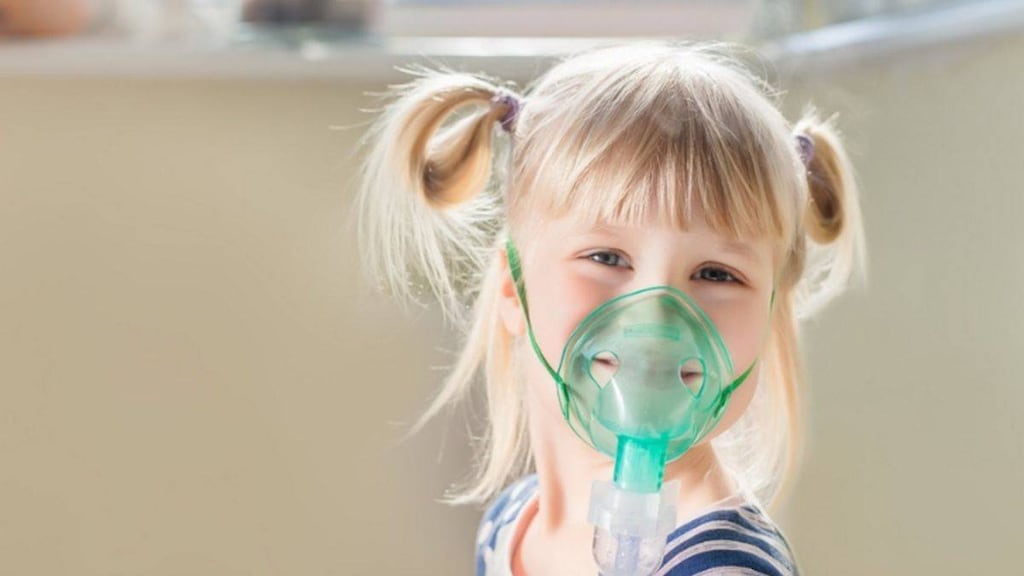What is Foradil Aerolizer?
Foradil Aerolizer is a long-acting beta2-agonist (LABA). LABA medicines help the muscles around the airways in your lungs stay relaxed to prevent asthma symptoms, such as wheezing and shortness of breath. These symptoms can happen when the muscles around the airways tighten. This makes it hard to breathe. In severe cases, wheezing can stop your breathing and cause death if not treated right away.
Foradil Aerolizer is used for asthma, exercise-induced bronchospasm (EIB) and chronic obstructive pulmonary disease (COPD) as follows:
Asthma
Foradil Aerolizer is used with a long-term asthma control medicine, such as an inhaled corticosteroid, in adults and children ages 5 and older:
- to control symptoms of asthma, and
- to prevent symptoms such as wheezing
LABA medicines, such as Foradil Aerolizer, increase the risk of death from asthma problems. Foradil Aerolizer is not for adults and children with asthma who are well controlled with long-term asthma control medicine, such as low to medium dose of an inhaled corticosteroid medicine.
Exercise-Induced Bronchospasm (EIB)
Foradil Aerolizer is used to prevent wheezing caused by exercise in adults and children 5 years of age and older.
- If you have EIB only, your healthcare provider may prescribe only Foradil Aerolizer for your condition
- If you have EIB and asthma, your healthcare provider should also prescribe a long-term asthma control medicine, such as an inhaled corticosteroid
Chronic Obstructive Pulmonary Disease (COPD)
Foradil Aerolizer is used long-term, 2 times each day (morning and evening), to control symptoms of COPD and prevent wheezing in adults with COPD.
What is the most important information I should know about Foradil Aerolizer?
Foradil Aerolizer can cause serious side effects, including:
1. People with asthma who take long-acting beta2-adrenergic agonist (LABA) medicines, such as formoterol fumarate inhalation powder (Foradil Aerolizer), have an increased risk of death from asthma problems.
- Call your healthcare provider if breathing problems worsen over time while using Foradil Aerolizer. You may need a different treatment.
- Get emergency medical care if:
- breathing problems worsen quickly, and
- you use your rescue inhaler medicine, but it does not relieve your breathing problems.
2. Do not use Foradil Aerolizer as your only asthma medicine. Foradil Aerolizer must only be used with a long-term asthma control medicine, such as an inhaled corticosteroid.
3. When your asthma is well controlled, your healthcare provider may tell you to stop taking Foradil Aerolizer. Your healthcare provider will decide if you can stop Foradil Aerolizer without loss of asthma control. You will continue taking your long-term asthma control medicine, such as an inhaled corticosteroid.
4. Children and adolescents who take LABA medicines may have an increased risk of being hospitalized for asthma problems.
Who should not use Foradil Aerolizer?
- Do not take Foradil Aerolizer to treat your asthma without a long-term asthma control medicine, such as an inhaled corticosteroid.
- If you are allergic to formoterol fumarate or any of the ingredients in Foradil Aerolizer. Ask your healthcare provider if you are not sure. See the end of this Medication Guide for a complete list of ingredients in Foradil Aerolizer.
What should I tell my healthcare provider before using Foradil Aerolizer?
Tell your healthcare provider about all of your health conditions, including if you:
- have heart problems
- have high blood pressure
- have seizures
- have thyroid problems
- have diabetes
- are pregnant or planning to become pregnant. It is not known if Foradil Aerolizer may harm your unborn baby.
- are breastfeeding. It is not known if Foradil Aerolizer passes into your milk and if it can harm your baby.
- are allergic to Foradil Aerolizer, any other medicines, or food products.
Foradil Aerolizer contains lactose (milk sugar) and a small amount of milk proteins. It is possible that allergic reactions may happen in patients who have a severe milk protein allergy.
Tell your healthcare provider about all the medicines you take including prescription and non-prescription medicines, vitamins, and herbal supplements. Foradil Aerolizer and certain other medicines may interact with each other. This may cause serious side effects.
Know the medicines you take. Keep a list and show it to your healthcare provider and pharmacist each time you get a new medicine.
How should I use Foradil Aerolizer?
See the step-by-step instructions for using Foradil Capsules with the Aerolizer inhaler that come with your medication. Do not use Foradil unless your healthcare provider has taught you and you understand everything. Ask your healthcare provider or pharmacist if you have any questions.
- Children should use Foradil Aerolizer with an adult’s help, as instructed by the child’s healthcare provider.
- Use Foradil Aerolizer exactly as prescribed. Do not use Foradil Aerolizer more often than prescribed.
- For asthma and COPD, the usual dose is 1 Foradil capsule inhaled through the Aerolizer inhaler 2 times each day (morning and evening). The 2 doses should be about 12 hours apart.
- For preventing exercise-induced bronchospasm, the usual dose is 1 Foradil capsule inhaled through the Aerolizer inhaler at least 15 minutes before exercise, as needed. Do not use Foradil Aerolizer more often than every 12 hours. Do not use extra Foradil Aerolizer before exercise if you already use it 2 times each day.
- If you miss a dose of Foradil Aerolizer, just skip that dose. Take your next dose at your usual time. Never take 2 doses at one time.
- Do not use a spacer device with Foradil Aerolizer.
- Do not breathe into Foradil Aerolizer.
- While you are using Foradil Aerolizer 2 times each day, do not use other medicines that contain a long-acting beta2-agonist (LABA) for any reason. Ask your healthcare provider or pharmacist for a list of these medicines.
- Do not stop using Foradil Aerolizer or any of your asthma medicines unless told to do so by your healthcare provider because your symptoms might get worse. Your healthcare provider will change your medicines as needed.
- Foradil Aerolizer does not relieve sudden symptoms. Always have a rescue inhaler medicine with you to treat sudden symptoms. If you do not have an inhaled, short-acting bronchodilator, contact your healthcare provider to have one prescribed for you.
Call your healthcare provider or get medical care right away if:
- your breathing problems worsen with Foradil Aerolizer
- you need to use your rescue inhaler medicine more often than usual
- your rescue inhaler medicine does not work as well for you at relieving symptoms
- you need to use 4 or more inhalations of your rescue inhaler medicine for 2 or more days in a row
- you use 1 whole canister of your rescue inhaler medicine in 8 weeks time
- your peak flow meter results decrease. Your healthcare provider will tell you the numbers that are right for you.
- you have asthma and your symptoms do not improve after using Foradil Aerolizer regularly for 1 week.
What are the possible side effects of Foradil Aerolizer?
Foradil Aerolizer may cause serious side effects, including:
- See “What is the most important information I should know about Foradil Aerolizer?”
- Bronchospasm with wheezing or coughing and difficulty breathing
- Low blood potassium (which may cause symptoms of muscle spasm, muscle weakness or abnormal heart rhythm)
- Fast or irregular heart beat (palpitations)
- Serious allergic reactions including rash, hives, swelling of the face, mouth, and tongue, and breathing problems. Call your healthcare provider or get emergency medical care if you get any symptoms of a serious allergic reaction.
Other possible side effects with Foradil Aerolizer include:
- chest pain
- increased blood pressure
- nervousness
- dry mouth
- muscle cramps
- nausea
- dizziness
- tiredness
- high blood sugar
- high blood acid
- trouble sleeping
Common side effects with Foradil Aerolizer include:
- headache
- tremor
Tell your healthcare provider about any side effect that bothers you or that does not go away.
These are not all the side effects with Foradil Aerolizer. Ask your healthcare provider or pharmacist for more information.
Call your doctor for medical advice about side effects. You may report side effects to FDA at 1-800-FDA-1088.
General information about the safe and effective use of Foradil Aerolizer
Medicines are sometimes prescribed for purposes other than those listed in a Medication Guide. Do not use Foradil Aerolizer for a condition for which it was not prescribed. Do not give Foradil Aerolizer to other people, even if they have the same condition. It may harm them.
This Medication Guide summarizes the most important information about Foradil Aerolizer. If you would like more information, talk with your healthcare provider. You can ask your healthcare provider or pharmacist for information about Foradil Aerolizer that was written for healthcare professionals.
How should I store Foradil Aerolizer?
- Store Foradil Aerolizer at room temperature between 68° F and 77° F (20° C to 25° C). Protect Foradil Aerolizer from heat and moisture. Do not remove Foradil capsules from their foil blister package until just before use.
- Always discard the old Aerolizer inhaler by the “Use by” date and use the new one provided with each new prescription.
- Safely discard Foradil capsules and the Aerolizer inhaler if no longer needed or is out-of-date.
- Keep Foradil Aerolizer and all medicines out of the reach of children.
What are the ingredients in Foradil Aerolizer?
Active ingredient: formoterol fumarate
Inactive ingredients: lactose (contains milk proteins), gelatin (capsule shell)


